J.P. Richardson, The Big Bopper
Last updated 7/14/2015 at Noon
In 1958 Jiles Perry Richardson, Jr.
was a disc jockey at KTRM Radio in Beaumont.
He was also a songwriter and was becoming a performer.
He hated his “formal name” and preferred to just be J. P., some of his friends called him “Jape”; that was fine with him too.
He was big, quiet, introverted, kind, almost shy, until he got behind the microphone and went on the air.
Then his personality changed, he almost became a wild man, he had developed an on air persona that was unlike any other DJ in the area.
He became “The Big Bopper”, used a Black dialect and at times was loud and crazy.
Doing commercials for Schlitz beer and Yazoo mowers, he would proclaim, “If you ain’t drinking Schlitz, you ain’t drinking beer!”, and “If you ain’t Yazooing, you ain’t mowin’”.
Sponsors loved him and his listeners loved him.
Richardson was born in Sabine Pass in 1930, his father was an oil field worker who had moved his family from town to town following work in the oil fields. They moved to Beaumont and Richardson attended David Crockett Elementary School and Beaumont High School. He had played football for the Beaumont Royal Purples and also been in the choir. An early gift of a small guitar from Sears and Roebuck and been his introduction to music. He loved that small guitar so much that his dad bought him a full sized one. In high school and later at Lamar State College he had played in bands for dances.
He had started college thinking about a career in law enforcement. Deciding to see about making some money, he got an interview with Joe Trum at the new KTRM radio station. Trum was known on the air as Tommy O’Brien and was the head of the sports department. Trum liked what he heard and hired Richardson to do sound effects for the sports casts of the Beaumont Exporters baseball games. The Exporters were a team in the Texas League and Stuart Stadium in Beaumont was their home field.
Before long Richardson was given his own show in the 9:00 p.m. to midnight time slot. He called himself “The Headwaiter of Club 99”. He created the character “Alawishes” and used a rubber frog as his companion. He would squirt air from the rubber frog into his mouth and use the funny sounds to have a conversation with himself and “Alawishes”. He quickly built a loyal group of listeners and sponsors.
A young lady visiting her sister to help her after the birth of the sister’s baby heard him on the radio and liked what she heard. Some friends arranged a date and the lady and disc jockey fell in love. Adrianne Fryou and J.P. Richardson were married on April 18, 1952. They did not have much money, but they were happy together and “Teetsie” as she was known, supported her husband in his career.
One day Richardson told her that he liked this new “Bee-Bop” music.
“I am 5’ 10” and weigh 210 pounds, I could become “The Big Bopper”, he said.
His character became popular, some thought that KTRM had actually hired a Black DJ. In between his time on the mic, he was constantly writing notes and working on songs in the notebook that was his companion along with his guitar.
He recorded “Boogie Woogie” in the Black alter ego.
Just as it seemed he was going somewhere with his music, he received a draft notice.
From 1955 to 1957, he was in the U.S. Army.
When he returned to Beaumont and back to work at KTRM, he approached the management with the idea of doing a “Disc-A-Thon”.
This would be a record breaking period of continuous broadcasting.
At first management was hesitant, but he kept pushing his idea and finally the grueling event was set up in the lobby of the Jefferson Theater.
When it was over, he had set a record of 122 hours, eight minutes of broadcast time and played 1821 recordings.
He had gone without sleep for six days.
His only breaks had been five minute cold showers while the five minute news casts were on.
He was allowed no stimulants of any kind.
He received $4000 in cash and merchandise and $750 of overtime pay.
Richardson was proud of a song he had written entitled “The Purple Eater meets the Witch Doctor” and was set to record it, but he needed to write a song for the “flip” side. He wrote a song about a guy talking to a girl on the telephone, “Chantilly Lace”. It did not take many plays before that had become the hit for the Big Bopper.
In the summer of 1958, he played New Orleans in a leopard skin sport coat and was drenched with sweat at the end of his set. The coat was so heavy from the sweat, it was hard for him to walk off the stage. He was an energetic performer.
By August, 1958, he had a contract with Mercury Records. He toured the eastern United States and in September, appeared on the Dick Clark Show. The Big Bopper and Chantilly Lace were on their way to the top.
In January, 1959 he was asked to join Buddy Holly and Ritchie Valens on the winter tour of Midwestern ballrooms. It was a grueling tour of one night shows. The transportation were old busses that were constantly breaking down. One bus had no heat working. It was so bad some of the performers tried to build a small fire in the back of the bus for heat. Richardson came down with a bad cold and when Holly decided to charter an airplane to go to the next show. Richardson managed to get a seat on the plane.
Roger A. Peterson was the pilot that would be flying the Beechcraft Bonanza owned by Dwyer Flying Service.
The three stars boarded the plane and were in high spirits about not being on the freezing bus.
Peterson put the plane in the air shortly after midnight on February 3, 1959.
Jerry Dwyer watched the takeoff and in about five minutes saw the taillight of the plane fade away.
The lights appeared to be going down.
It was a very bad time to be flying, the pilot would have to fly on instruments due to the bad weather conditions that night.
Peterson had told Dwyer he would radio a flight plan to him once he was airborne.
Dwyer was concerned when he was not able to raise Peterson on the radio.
The next morning Dwyer took a plane to search for the missing Beechcraft. He found the wreckage 5.2 miles from the takeoff point.
From the air he could see three bodies on the ground.
When the searchers reached the wreckage, they found Holly and Valens near the plane, Peterson still seated at the controls, and the body of Richardson 40 feet away from the wreckage and across a fence. He was laying on his side in the stubble of the corn field.
February 3, 1959 would become known as “The Day the Music Died”.
At five minutes past midnight on February 3, 1959 Beech Bonanza N 3749N took off from a small airport in Clear Lake, Iowa. Less than five minutes later, after only flying for five miles, the plane crashed. Aboard the plane was the pilot Roger A. Peterson, Charles Hardin Holley, Richard Valenzuela, and J. P. Richardson. The three were becoming the biggest stars in rock and roll. They were performing as Buddy Holly, Ritchie Valens, and The Big Bopper. The tragedy became known as “The Day the Music Died”.
As with any unexpected sudden death of major figures, there is also supposition as to the cause. There were some basic things known and found after the crash. There has also been speculation and “what if” since the crash.
Peterson was a 21 year old pilot who had been flying for Dwyer Air Service in Clear Lake for one year.
His pilot license was obtained in October, 1954.
He had 711 hours of flight time, 128 hours in Beech Bonanzas.
He was instrument qualified.
However, he was trained in and familiar with using a conventional artificial horizon indicator.
Beech N 3749N was equipped with a new instrument, a Sperry Altitude Gyro.
Peterson had never used one of those instruments.
At takeoff the barometer was falling, there was light snow, and the ceiling and visibility was dropping.
Surface and aloft winds were increasing.
It was a time of very bad flying conditions.
Peterson was probably flying in conditions he was not prepared for.
Hubert Dwyer, the owner of the plane watched it take off and saw the tail lights began to descend and go out of sight. The plan had been for the plane to climb to an altitude of 800 feet. Peterson was to report his flight plan to Dwyer after he was in stable flight. Dwyer was never able to contact the plane. The next morning, he took another plane and began a search. At 9:35 the next morning the wreckage was spotted. All four aboard had been killed.
Ground investigation showed that the right wingtip had made contact with the ground.
Both propeller blades were sheared off at the hub.
It appeared that the plane had hit the ground in a steep right banking turn with the engine at full power.
Wreckage was scattered over 540 feet from the point of impact.
The two front seatbelts were torn from their attachment points.
The rear middle seat belt had also been torn loose.
The two outer rear belts were attached but one had a broken buckle.
The shape of the mass resembled a ball with a wing sticking up.
Peterson’s body was in the wreckage with his legs sticking out.
Holly and Valens were each 17 feet from the wreckage to the south.
Richardson was 40 feet away to the north and across from the fence the plane had come to rest against.
Instruments showed that the plane had been in a descent of 3,000 feet per minute and had impacted at between 165 and 170 miles per hour. Evidently Peterson had read the gyro wrong and thought he was climbing.
There was speculation that since Richardson’s body was so far away that he may have survived and crawled that far before he died. Two months after the crash, Holly’s pistol was found in the field and some began to wonder if the gun had discharged and shot the pilot or one of the passengers.
J.P. Richardson, the Big Bopper, had died on the eve of stardom. Chantilly Lace was topping the charts, but he had not seen any royalties. At the time of his death he had $8 in a savings account, a Dodge sedan worth $400, and a $100 guitar. His wife had to pay $2642 for his funeral expenses. His contributions to rock and roll as a singer and songwriter would later bring his estate over $100,000 per year in royalties from Chantilly Lace alone.
Richardson had been buried at Forest Lawn Cemetery in his home town of Beaumont. In 2007 a decision was made to move his body and that of his wife “Teetsie” to another section of the cemetery. The Texas Historical Commission had issued a plaque and there were plans to install a life sized statue of the Big Bopper at the grave site. The new gravesite would be more visible and accessible.
Jay Richardson, the son, decided that since the body was going to be dug up and moved, it would be a good time to do an investigation and put the rumors to rest.
On March 6, 2007, a group of people met at Forest Lawn Cemetery in the early morning and prepared to exhume the body of the Big Bopper. Jay had contacted Dr. William “Bill” Bass, of the University of Tennessee. Bass was one of the leading forensic pathologists in the U S at that time. He was the pathologist who had identified the Lindbergh baby after that kidnapping in 1936. Dr. Bass had also established the “Body Farm” at the University of Tennessee.
The grave was opened and the vault containing the casket was taken to the maintenance shop at the cemetery to be opened. Even though there were water marks on the casket, the steel vault had done its job and there was no water inside the casket. The undertaker warned those present that there would be an unpleasant odor. No one knew what to expect about the appearance of the body. Jay Richardson was about to see his father for the first time. Jay was born April 28, 1959, nearly three months after the plane crash.
“When the casket was opened, I was apprehensive about Jay’s reaction, but he remained outwardly calm. I looked at the body and found that it was discolored as expected, but the features were recognizable, even the trade mark crew cut. The body was dressed in a black suit with a gray and blue tie. I looked at Jay and found a remarkable resemblance between him and the body in the casket. It was a moving moment for us to see him as he saw his father for the first time”, said Dr. Bass.
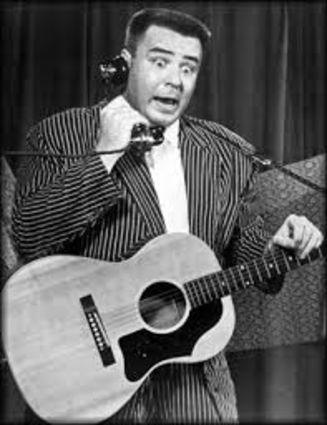
There were two radiologists and portable x-ray equipment. A complete set of body x-rays were taken. When Dr. Bass reviewed them he showed Jay that with the exception of the left hand there were major fractures from head to foot in the body. There were three injuries that could have caused instantaneous death. The skull was crushed, the neck fractured and the rib cage was grotesquely mangled. Both legs had multiple fractures in the lower and upper bones. There were seven fractures in the pelvis.
There was no way that the Big Bopper could have moved after hitting the ground with such force. There was also no evidence that he had been shot by a bullet.
Jay Richardson was able to see his father and to put rumors to rest. The two aims he had were accomplished.
Jay started a career as the “Little Bopper” and performed Chantilly Lace in a tribute manner. He was booked often at the Surf Ballroom in Clear Lake, Iowa where the Big Bopper had given his last show. He eventually made his home in Katy, Texas and died on April 21, 2013.

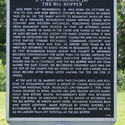
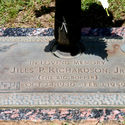
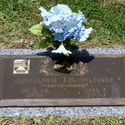
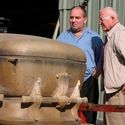
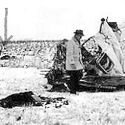
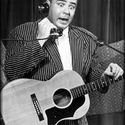













Reader Comments(0)